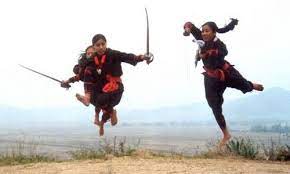Free Courses Sale ends Soon, Get It Now


Free Courses Sale ends Soon, Get It Now



Disclaimer: Copyright infringement not intended.
Context: In Jammu and Kashmir locals have taken the steps to protect and promote the traditional martial arts sport ‘Thang-Ta”.
Thang Ta:
Martial Arts in India:
Kalarippayattu (Kerala specially) & rest of south
Malla-Yuddha (South India)
Silambam (Tamil Nadu)
Gatka (Punjab)
Musti Yuddha (Varanasi)
Lathi (Punjab & Bengal)
Pari-Khanda (Bihar, Jharkhand, Odisha)
Inbuan Wrestling (Mizoram)
Kuttu Varisai (South India)
Cheibi Gadga (Manipur)
Sarit-Sarak (Manipur)
Thoda (Himachal Pradesh)
Mukna (Manipur)
Lakna-Phanaba (Manipur)
Karra Samu (Andhra Pradesh)
https://www.pib.gov.in/PressReleasePage.aspx?PRID=1831843
© 2024 iasgyan. All right reserved